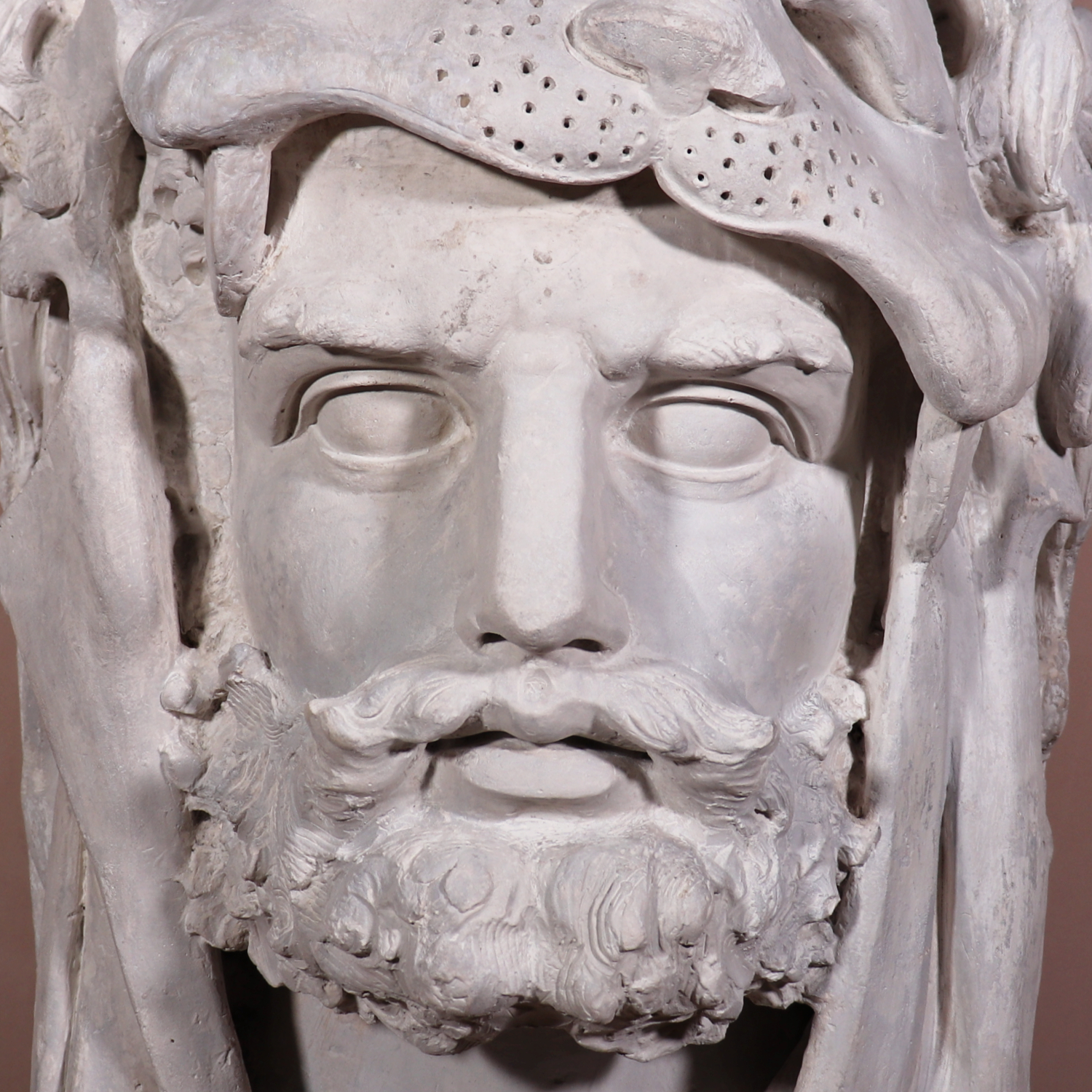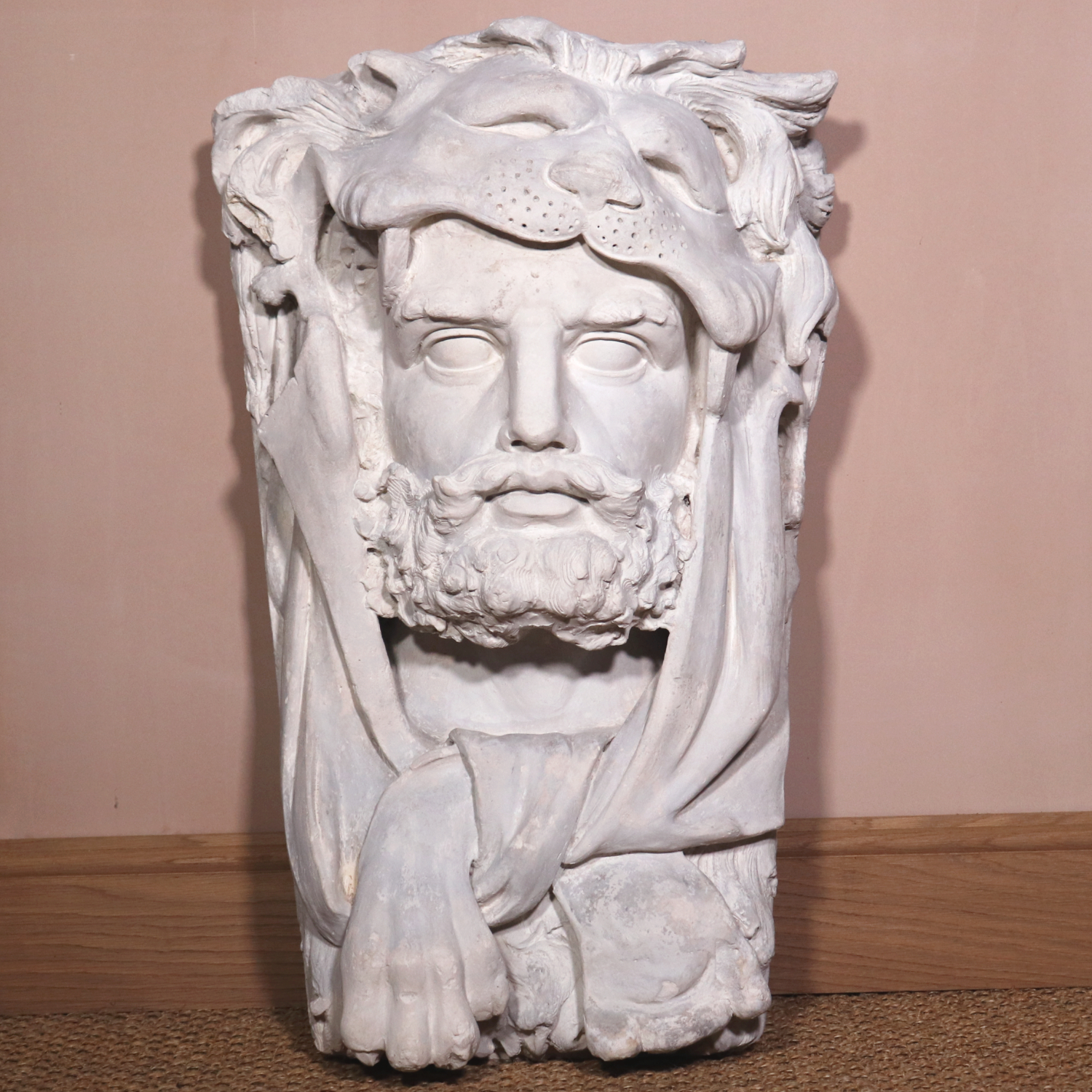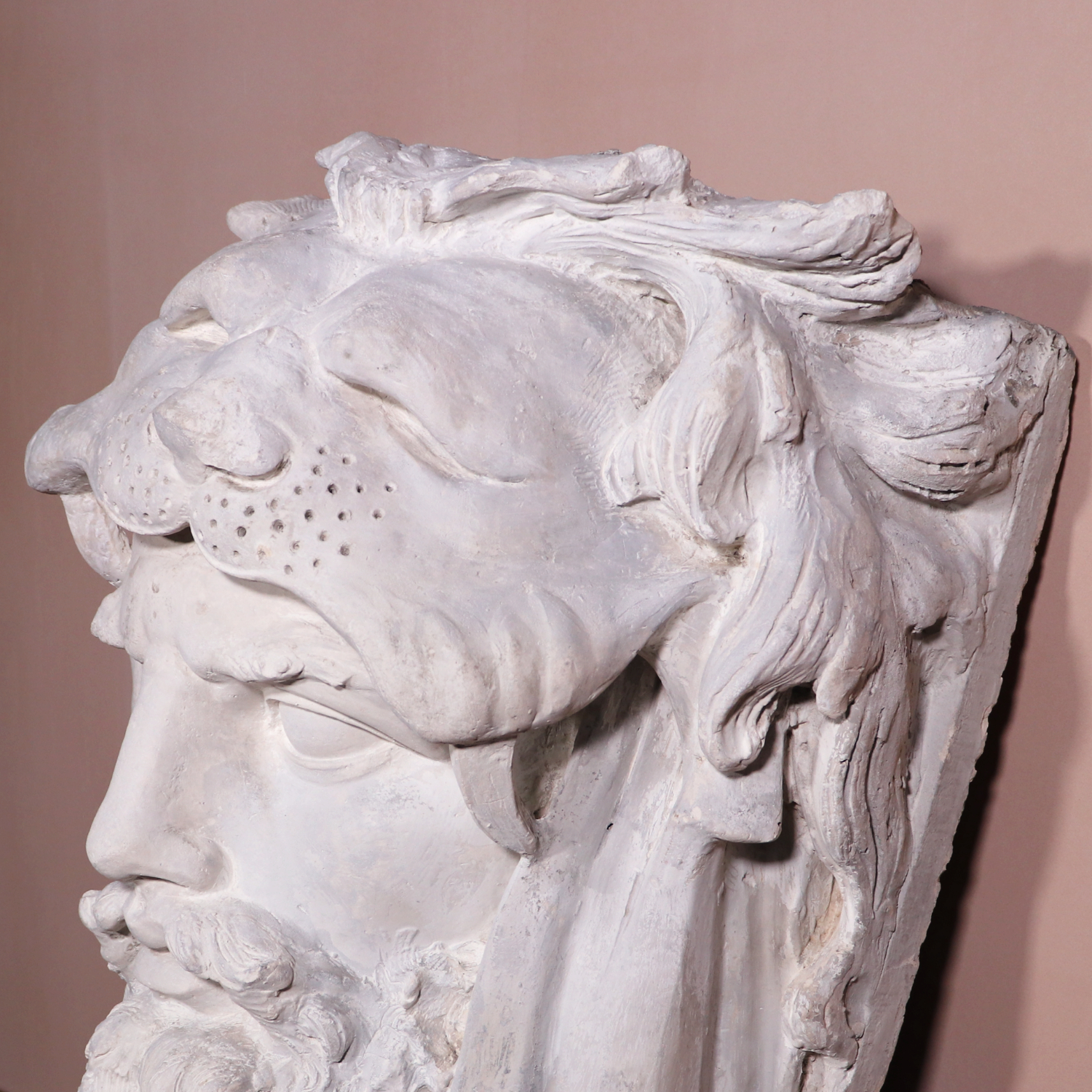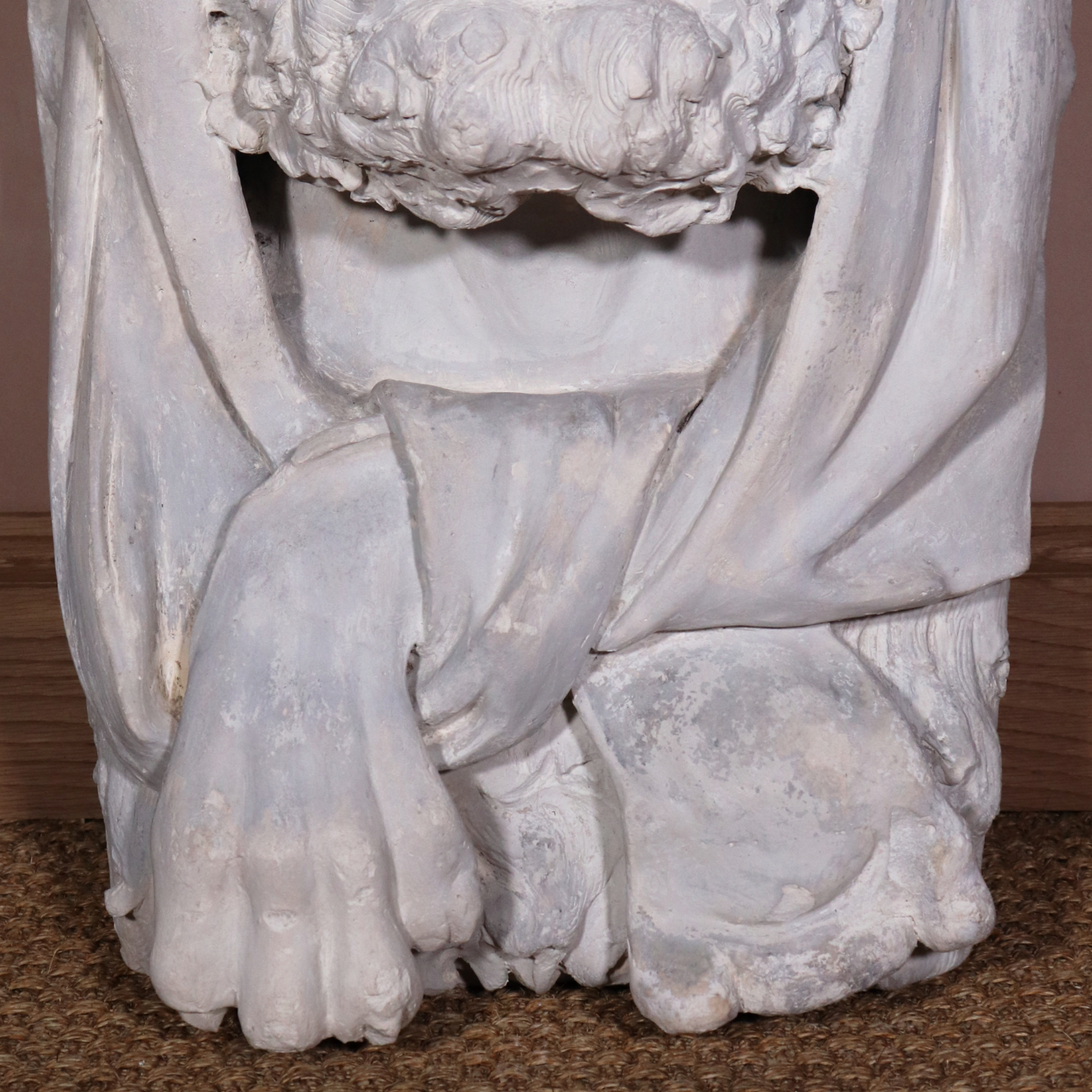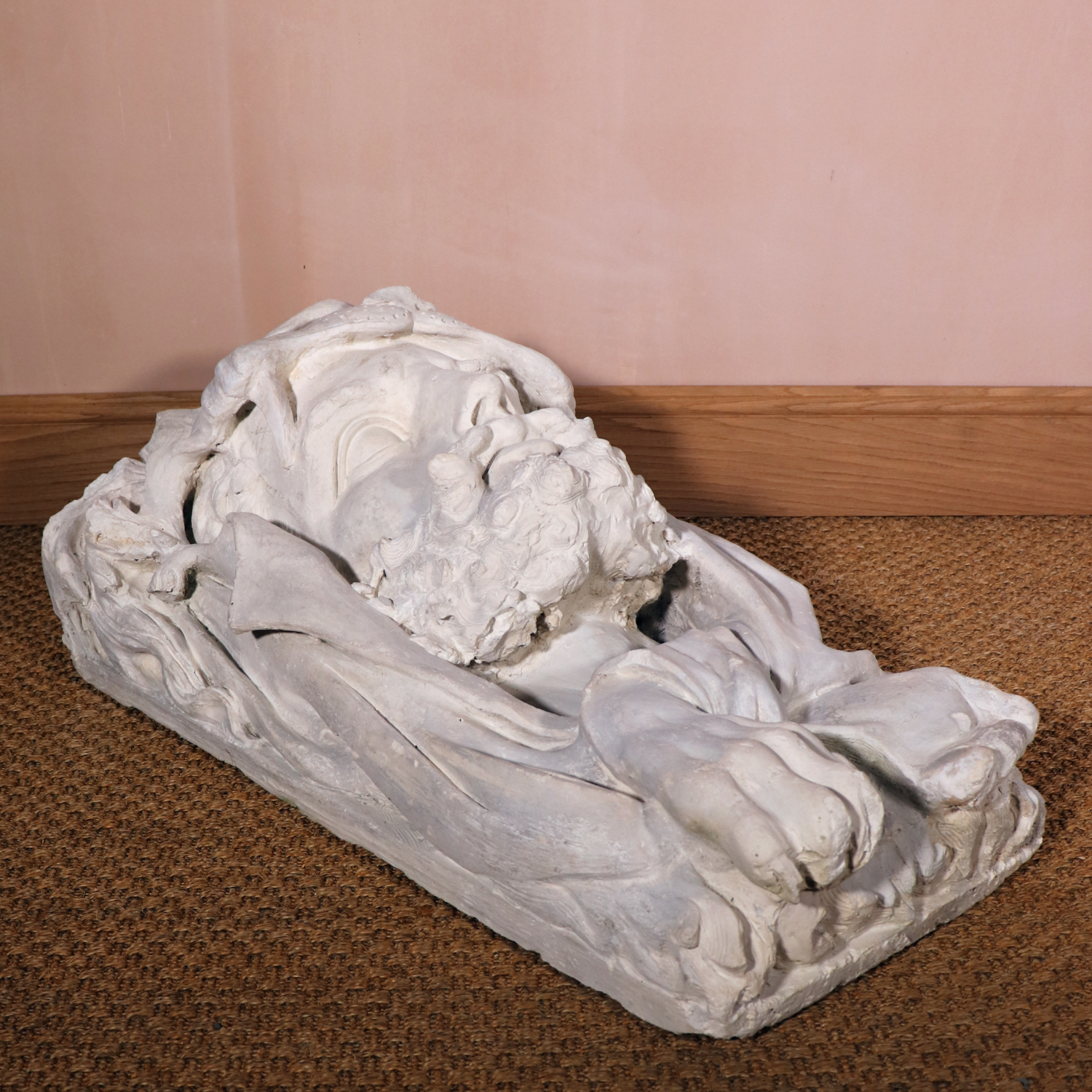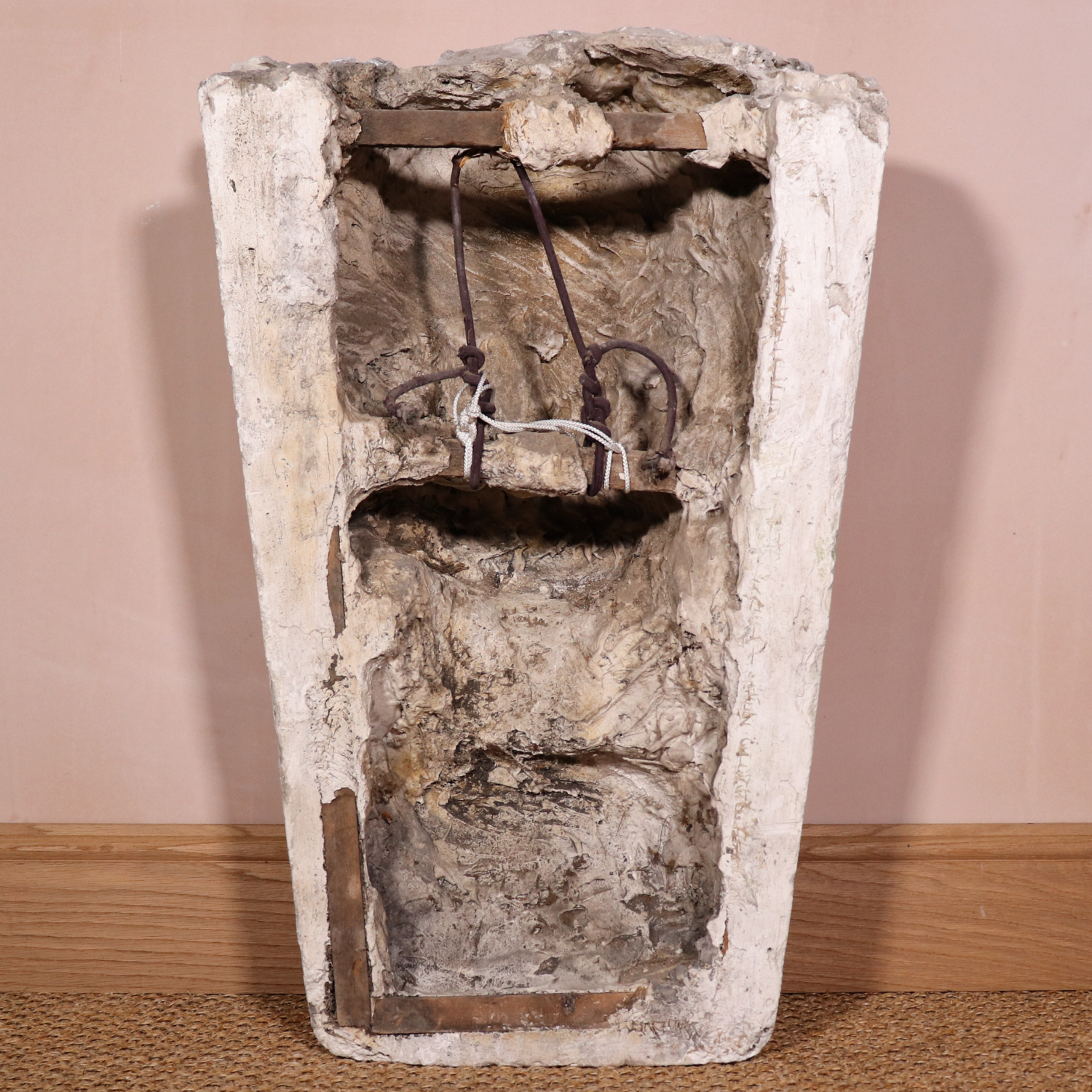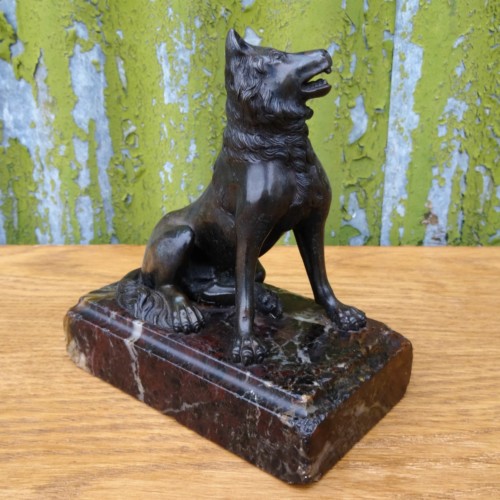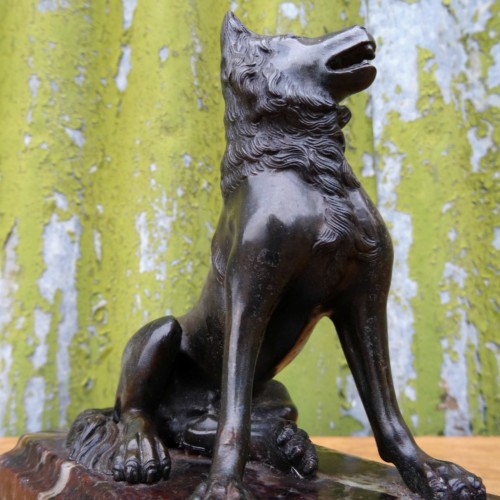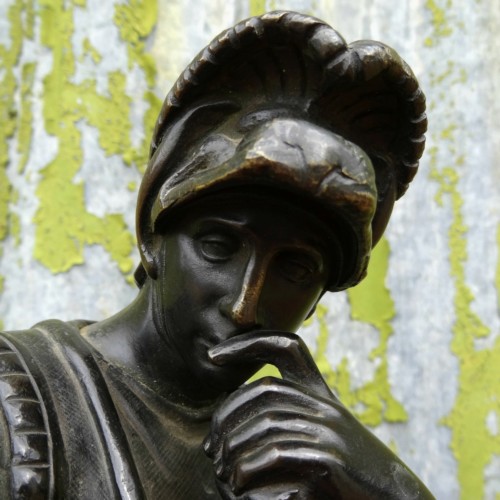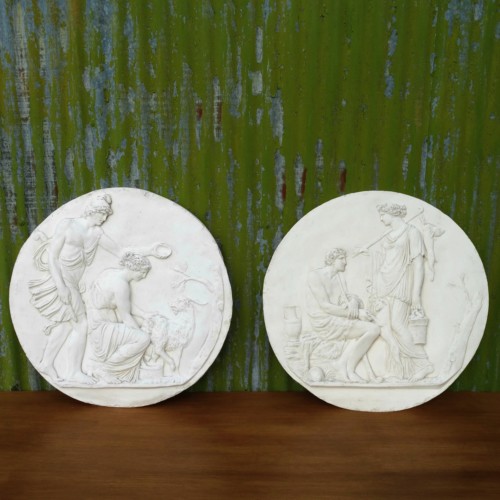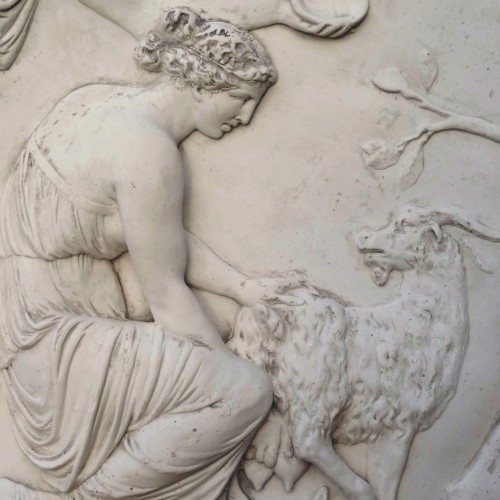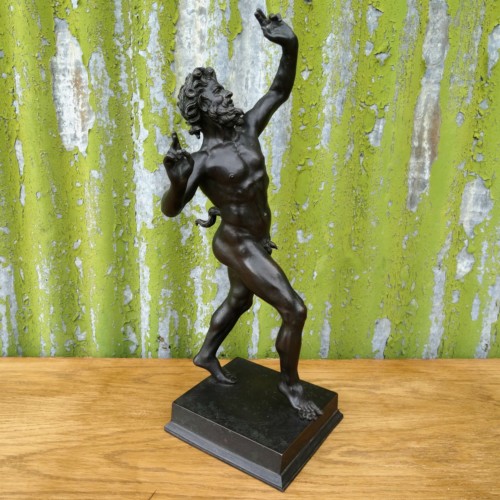A rare, large and impressive plaster keystone mask of Hercules, English or Italian, circa 1820, with Nemean lion pelt headdress.
In classical mythology, Hercules was famous for his strength, and killing the lion was his first task.
This ambitious plaster casting, after the Roman marble statue of a bearded Hercules now in The Metropolitan Museum of Art, New York, was presumably intended for a Country House folly or orangery based on its impressive scale and proportions: https://www.metmuseum.org/art/collection/search/247001. As a statement piece it would work as the centrepiece of an interior room, perhaps over a chimneypiece. It wouldn’t look out of place in Sir John Soane’s Museum!

